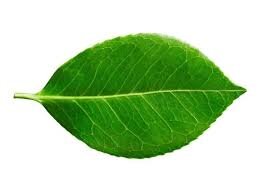Welcome to Change is Simple’s Online Learning Platform!
Overview: Today, we will be continuing to dive into the benefits trees provide us, especially the types of trees around where we live. We will also be learning how to identify trees by their leaves. These activities are for all ages.
Grade Level: K-6
Theme: Natural Systems, Natural Resources
Supervision needed? No
Essential Questions:
Why are trees so important?
What is the scientific process that trees go through to create oxygen?
Materials Needed:
Pencil
Paper
Camera
Standards:
We are going to be covering information from our last post so if you haven’t seen that you can click below and check it out!!!
Activity #1: How are the trees around your house helping you?
For this activity we are going to be taking a look at the trees around your home. As we have talked about this week trees have so many important benefits. So, let’s see how the trees around your house are helping you out! This activity is for all ages and you can be as detailed as you would like. There are examples under each step, but I am not the best artist so you can make yours however you’d like.
Materials:
Piece of paper
Something to draw with ( colored pencils, crayons, markers, pen, pencil)
Step 1: Start by drawing your house from a birds eye view
Step 2: Add what is around your house. Are there other buildings close? Are there trees? Is there water or a stream?
Step 3: Now add the trees, (in my picture they look like bushes since it is from a birds eye view)
Step 4: Number each tree, then write a sentence for each on how it is beneficial.
Ex) Disclaimer I don’t have many trees in my back yard…..
1 and 2: These are very large old trees they provide shade for my back yard and the back up my house when the sun is coming up. They also provide home for so many birds….that wake me up every morning
3 and 4: These are also very large trees that are in my neighbors yards. These trees provide some shade for their deck and pool.
Since houses are so close here they act like trees would, helping to shade my house and protect it from the wind.
Activity #2: Identifying the trees around your house by their leaves
On Wednesday we identified trees by their bark. This is a great technique to use in the winter when there are no leaves on the trees. Now that it is almost summer, the leaves have finally popped! So let’s take a look at them!
A Dichotomous Key is the most popular tool to use when identifying a leaf. These keys asks you questions about what the leaf looks like to slowly narrow your option down. Almost every Dichotomous Key starts with the same question which I have put below. Answer the question and then continue to use one of the keys that are listed it identify your trees.
Question #1
Does the tree have Needles (A) or Leaves (B)?
A
B
There are two main types of trees Coniferous and Deciduous.
Deciduous Trees: These are the trees with leaves on them, they lose their leaves every fall and grow back in the spring.
Coniferous Trees: These trees have needles on them, and their needles stay on the tree all year around. They’re also called Evergreen trees.
How we can help!
There is a lot that we can all do while we are at home!
Make sure to recycle!
Reuse as much as possible.
Reduce your consumption of meat.
Reduce your use of products with palm oil in them.
Plant a tree whenever and wherever you can!











